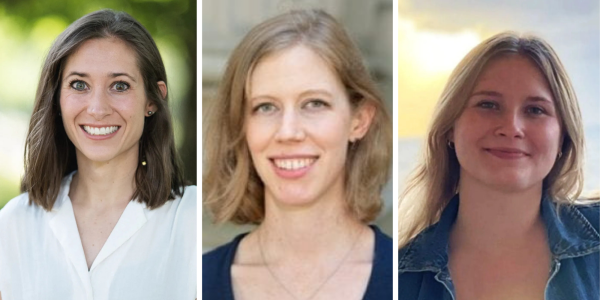On Feb. 9 at 4:00pm, the Department of East Asian Languages and Cultures will welcome featured speaker Laura Miller, who will give a lecture titled “Historically Hot: Reimagining Beauty from Japan’s Past.” Miller, an internationally prominent scholar, is the Ei'ichi Shibusawa-Seigo Arai Endowed Professor of Japanese Studies and professor of linguistic anthropology at the University of Missouri-St. Louis. She will be discussing historically accurate portraits of Japanese beauty as compared to more contemporary, commercial depictions. This lecture is part of a series called TEA (Teaching East Asia) that invites lecturers to introduce audiences to new aspects of research on East Asia.
Miller will focus in particular on a hybrid of historical and commercial portraits of Japanese beauty. When producers develop manga, anime, film, and TV programs set in historical eras, they often find that the beauty standards of long ago are quite different from contemporary reader and viewer expectations. Rather than try to convey a more historically accurate image, artists and writers meld aspects of historic fashion with more modern aesthetics.
“Culture producers try to reconcile their portraits with the minimum damage to current beauty expectations while still telling about history.” Miller explains, “However, they aren't always able to do so for certain aspects of beauty. For example, high ranking courtesans of the Edo period blackened their teeth, a practice known as ohaguro. But obviously a contemporary audience does not want to see a beautiful actress who has participated in this type of beauty work. So, there will be certain aspects of historical beauty that are ignored or downplayed.”
This discrepancy is certainly an interesting one—Miller elaborated on the ways in which we see this phenomenon, and what drives it to continue, stating, “I found a few key areas that pose a special problem for the imagination today, such as hairstyle, eye shape, and teeth color. One shift that accounts for this discrepancy is that the depiction of historical figures is no longer controlled by elites.” Miller continues, “Manga artists, filmmakers, and game creators have license to modify and play with images of historical people in any way they like.”
Rebecca Copeland, a professor of Japanese language and literature and chair of East Asian Languages and Cultures, is enthusiastic about Miller’s upcoming visit. “There is a wonderful parodic power in Japan’s playfulness that outside observers often miss. The anthropologist and early student of Japan, Ruth Benedict, famously said that ‘The purpose of Anthropology is to make the world safe for human differences.’ Dr. Miller takes a similar stance.” Copeland elaborates, “She shows us aspects of Japanese culture that we think we already understand. But she presents them to us in a new light. And she helps us understand and appreciate that differences in cultures are important. By better appreciating other cultures, we come to better understand ourselves.”
Miller offered a final thought on the larger implications of beauty ideology. She says, “This recasting of beauty is not unusual and makes economic sense, yet our consumption of revamped hotties and beauties from the past serves to reassure us that our own notions of beauty are natural ones, not historically contingent.”
Historically Hot is sure to be thought-provoking and offer a multi-dimensional view of Japanese beauty, while perhaps challenging audience members to think about beauty and history in their own lives.
“Historically Hot: Reimagining Beauty from Japan’s Past” will be presented by Dr. Laura Miller on Feb. 9 at 4:00pm in January Hall room 110.




